Chinchillas are adorable little bouncing puff balls, and when it comes to purchasing one, few stop to think twice before pulling the trigger. As with any pet, it is imperative to do your homework first to understand the pros and cons of owning the pet. Knowing precisely what husbandry for such an animal will entail and how long the life expectancy is for your potential future housemate is crucial.
Chinchillas are often whimsical friends who love exploring, bouncing off objects when they get excited, and love snacks. All of those features sound like an amazing and easy-to-care-for furry friend. Unfortunately, chinchillas are challenging to care for because they are quite delicate to change. Be sure to do extra research for weeks before entertaining the idea of housing one of the sweet balls of fluff. They may not be the best pet for you.
A Few Reasons To Consider Before Adopting a Chinchilla

They are one of the cutest animals in the world but are far from the easiest to care for.
©Creatopic/Shutterstock.com
Chinchillas rank high on the cuteness scale. However, so much more goes into having your very own little fluff ball. They aren’t the easiest pets to care for and can be especially difficult if you are allergic to them or the volcanic dust they bathe in.
1. Allergies

Watching a chinchilla take a sand bath is adorable, but it’s no longer fun once you begin sneezing and rubbing your eyes.
©Vadym Plysiuk/iStock via Getty Images
Chinchillas have highly dense fur that can cause a significant allergic reaction in some people. The odd thing is that these same people may not be allergic to any other animals. Chinchilla fur is unlike the coat of any other animal. They have 60 hairs per hair follicle and 20,000 hairs per square inch. Their extremely fine hair has a way of making its way into the eyes and noses of humans, leaving them sneezing for hours with red, itchy eyes and sometimes even a bit of a wheeze. This is all just about their fur. We haven’t discussed the volcanic “finer-than-baby powder” dust they need to bathe in.
While a chinchilla bathes in the special volcanic sand, they run in and out of the sand enclosure, flipping around and rolling in the dust. This ensures they have wholly covered every hair with the mega-fine, oil-absorbing dust. It is vital for their health that they take at least one dust bath per week.
The battle doesn’t simply go away when you pick up the sand enclosure and clean it. The sand or extra fine dust will coat your entire home and everything you love, and there will never be a way to fully clean it all up. Plus, since dust baths are recommended frequently, this is a battle you won’t ever win. The dust can easily be inhaled when it becomes airborne. The dust can leave an asthmatic gasping for air and a person without allergies in bad shape. It is so severe that it really shouldn’t be used inside a living space at all.
2. Cost of Everyday Care

Everything a chinchilla requires to have a happy life involves a good bit of money.
©Sergey Polegenko/iStock via Getty Images
Chinchillas aren’t just problematic for people with allergies; they are also hard on bank accounts. They are expensive to adopt and typically run several hundred dollars. The supplies they require to get them set up can be a lot. The correct enclosure can run several hundred dollars, if not more. You want the very best for your fuzzy little friend. They are a long-term commitment, and their enclosure should reflect that.
The bedding, perches, and sleeping boxes are also costly. Don’t forget to purchase a few highly-rated toys for your little fluffball. That’s not with the cost of general upkeep added in. Make sure to do your research when choosing what will work best for your chinchilla, get all of the supplies, and have it set up before taking the chinchilla home. Do not get the generic “chinchilla food blend.” Do your homework and choose the correct, nutritious food for their bodies.

If you see a move shortly, do not get a chinchilla until after you have settled.
©Vera Larina/Shutterstock.com
Chinchillas are delicate creatures that are highly prone to health issues if they are stressed too much. A move is stressful for everyone, but some animals do better than others. When moving, you are stressed, which makes your pets even more stressed. The added noise, smells, new people, and upturned routines can be tough on pets. They do not know what’s happening or what to expect next.
When a pet is a prey animal, like a chinchilla, the new smells, sights, and sounds can throw their usual schedule for a big, miserable loop. These soft little animals are nocturnal, and with so much craziness and loud noises during the day, they may not get the sleep they need. When the typically nocturnal animal has to sleep at night when they should be awake and foraging, it will inevitably cause massive stress on their tiny bodies. When such a small creature faces such enormous stress and changes in their schedules, they can pick up bad habits and become ill.
4. Electricity Failures can Mean Death

One of the scariest times to own a chinchilla is when your power goes out in the middle of a heat wave.
©DimaBerlin/Shutterstock.com
Chinchillas are from high in the Andes mountains, where the temperature doesn’t fall below 20 degrees Fahrenheit and does not ever go above 80 degrees Fahrenheit. When it is above 70 degrees, chinchillas live deep within their burrows under rocks to stay cool. Chinchillas should live between 60 – 75 degrees in a domesticated situation. The temperature should never exceed 75 degrees, or the chinchilla’s body will begin shutting down. This can happen quickly. No amount of time above 75 degrees is safe for a chinchilla.
If you live somewhere prone to electrical failures and blackouts, having a backup plan in such a case is crucial. If the power failure occurs while you work and the temperature rises about 75 degrees where your chinchilla lives, you may come home to a chinchilla acting hot but nothing more. Their ears turn bright red and hot as they try to cool their bodies in the only way they are able. They may also be panting, have a high body temperature, and are reluctant to move. This will lead to a very dangerous version of heat stroke. In many cases, they require immediate vet care and need to cool down with room-temperature water before going to the vet.
5. Exotic Vet Care is Costly

Vet care is never cheap, just as a doctor or emergency room care is not.
©Pixel-Shot/Shutterstock.com
Since we are on the topic of chinchilla emergencies, taking your little buddy to the emergency vet or regular vet will not be cheap. The type of care required for a chinchilla is one only an exotic animal vet can give. Exotic animal veterinarians are quite a bit more than your average vet. They aren’t nearly as common, so you might be looking at a long drive to reach the only one in your area.
Chinchillas do not require much vet care, but when they do, it’s generally an emergency. Have an exotic veterinarian’s phone number you are comfortable with in case of emergencies.
6. Chinchillas are Nocturnal
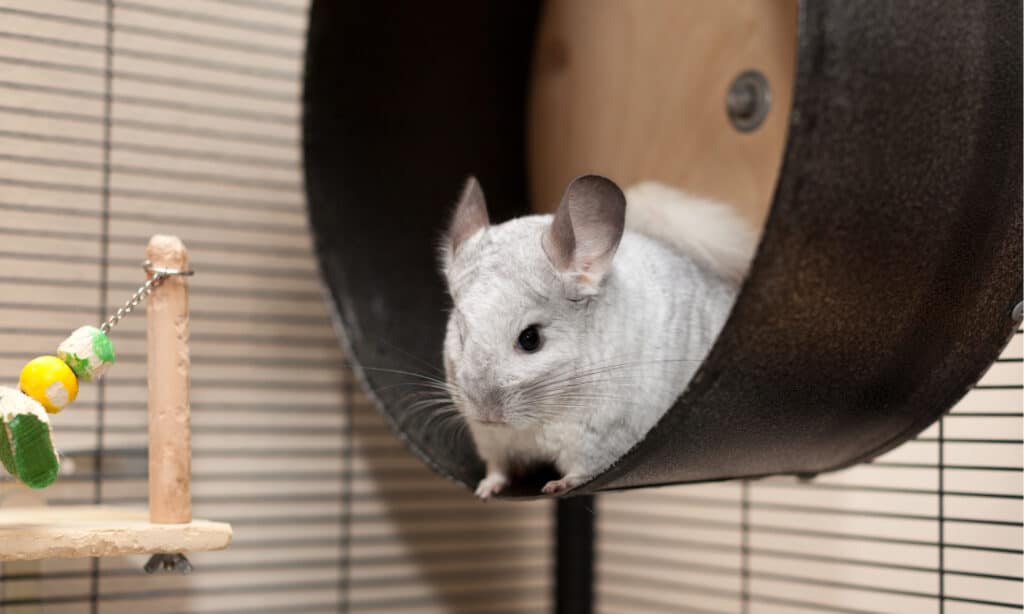
If you aren’t nocturnal, this may not be the right pet for you.
©kesterhu/Shutterstock.com
Chinchillas are the most active at dusk and dawn, which can be reasonably doable for many people if enough time to play with their chinchilla is set aside. These funny little furballs are hyperactive and very fast. They love bouncing off walls and racing back and forth in hallways with a chinchilla friend. This kind of activity can take an hour or more.
They require a lot of exercise time and get agitated when they are constantly kept cooped up. They are up from dawn to dusk, playing and foraging in the wild. Be sure to provide them with a closed wheel to run on safely. It must be the appropriate size for a chinchilla, or they can hurt their backs running on it.
7. Space Required for an Appropriate Enclosure

If you like living out of a camper while exploring the country, a chinchilla is not the pet for you.
©iStock.com/alptraum
Chinchillas frequently require their room to run and play in. If that just isn’t doable, you will need adequate space for your friend’s enclosure to fit and a properly closed-off space for them to run and play, free of hazards and other pets. This certainly only works out with some types of living arrangements.
If you prefer a van or camper life, a chinchilla is not the pet for you for many reasons. Rental homes aren’t always the best places for a chinchilla, either. Their chewing can be destructive, and their volcanic sand can get into every niche imaginable. This is one pet that would be very difficult to keep secret from your landlord since their enclosure will be huge if done correctly.
8. Chinchillas can Live a Long Time
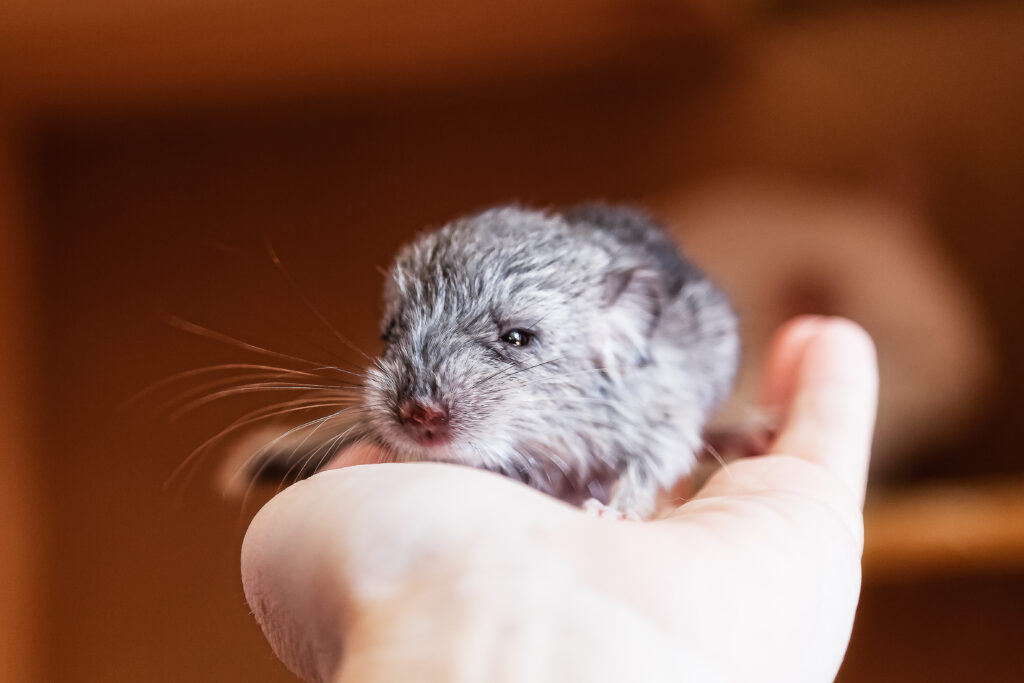
Most chinchillas can live much longer than a dog, which is an important factor when considering adding one to the family.
©iStock.com/Icealien
Chinchillas can live up to 20 years in captivity, though 10 years is the average. Either way, that is quite a bit longer than most pets and is undoubtedly more than a hamster or rodent. When you choose to bring a chinchilla into your life, understand the commitment you are signing up to make. This, along with all other pets, is not a part-time commitment.
Adoption is a lifelong promise to always provide the very best for them throughout their lives. That means if you move, they move with you. It means finding a pet-friendly rental no matter what, always allowing them plenty of exercise time, treats, and their room when possible, and loving them until the end. Too many animals are rehomed or dumped in rescues when problems arise. A pet is forever.
9. They Aren’t Into Being Handled, Petted or Snuggled
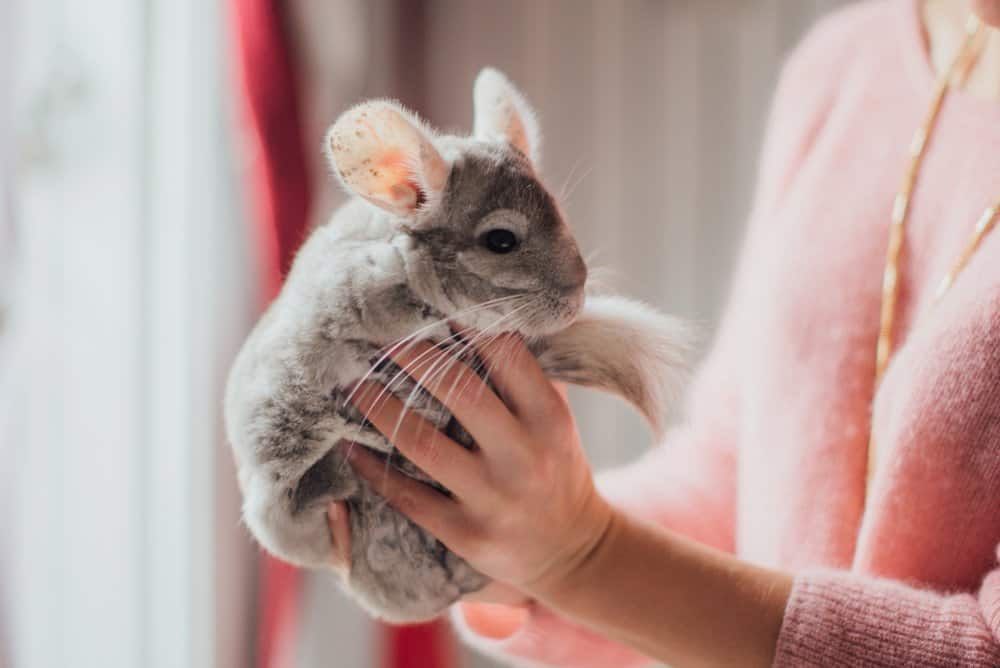
Chinchillas are hyperactive and nocturnal and aren’t into snuggling as much as they are into running and playing.
©Anya Poustozerova/Shutterstock.com
These small creatures love running and playing, often bouncing off walls and anything else they find bounce-worthy. They are like Winnie the Pooh’s friend Tigger. They just want to bounce their cares away. You cannot go into a new relationship with the expectation that you will change the other part of the relationship to suit your life, or you will both wind up miserable.
For this to be a happily ever after for your chinchilla, come down to their level and learn to have fun in a way that makes them the most comfortable. It isn’t their job to become friendly and cuddly to make you happy. You adopted them to provide them with happiness and a great life. An animal needs to be happy on their terms, not yours.
10. Chinchillas Aren’t Great Pets for Children
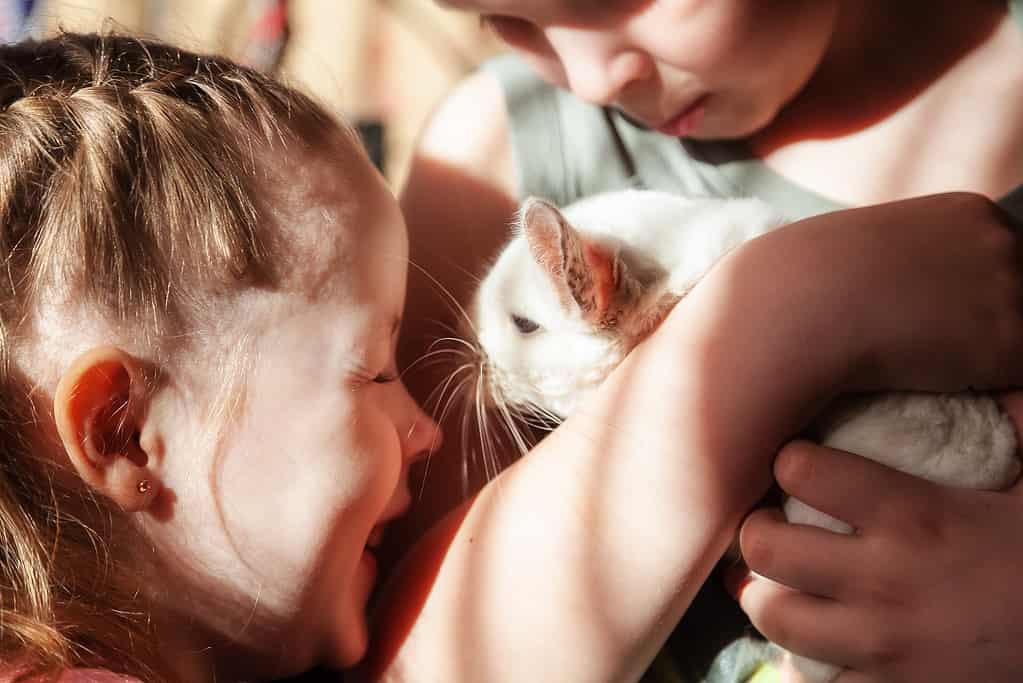
Chinchillas and children have differing ways of showing happiness and playing.
©Icealien/iStock via Getty Images
Children are typically loud, silly, clumsy, and have very short attention spans. Chinchillas are similar in some ways but do not mesh well with what makes a chinchilla the happiest. Chinchillas sleep during the day when children are the most active. While a child sleeps, the chinchilla comes out to play. Chinchillas are very delicate and do not like being held at all. They aren’t big fans of touching unless done on their terms. This takes time and patience from the human wishing to interact with the chinchilla, which children typically do not have.
Children are rough and prone to tantrums, which could seriously injure a chinchilla. Though it is pretty rare, a chinchilla might bite if in distress. If this happens to your child, the chinchilla can be accidentally hurt by the child or face losing its home with you if it is seen as a vicious animal.
11. They Have Dental Issues

When you choose to adopt a chinchilla, you are agreeing to provide all care necessary, and dental care is part of the package deal.
©hightowernrw/Shutterstock.com
Chinchilas are born with open-rooted teeth, which means they are continuously growing. Most rodents have this type of teeth, which means they must have a way to file down their teeth, or it can create serious health issues. Chinchilla teeth can grow two or three inches a year!
If a chinchilla’s teeth do not meet adequately for chewing, this can lead to malocclusion. When this happens, the poor fuzzball’s teeth can grow and cut their tongue, gums, cheeks, or lips, creating painful wounds and eating problems. If it is painful for a chinchilla to eat, they may stop doing it altogether. Dental work for any typical pet is costly and can be anywhere from $600 – $2000. The care at an exotic vet will cost even more.
12. Chinchillas are Pack Animals

In the wild, chinchillas are extremely endangered due to the fur trade.
©slowmotiongli/Shutterstock.com
Chinchillas are pack animals and, in the wild, will live together in separate burrows. There can be as many as one hundred chinchillas all living together. It is best advised to have more than one chinchilla, but they cannot be housed together. They are territorial, will fight, and can injure each other if left alone. They do like to play together, and you will need to get them all out to do so. When you have several chinchillas, the cost of housing and care is multiplied.
13. They are Messy

Messy little fuzzball chinchillas love playing in the volcanic dust.
We’ve already covered allergies, but here’s something extra to consider in that category. It is next to impossible to irradicate your home of volcanic sand from a chinchilla’s dust bath. Since they need to have it at least once a week, you will find significant issues with the cleanup. It’s also challenging to clean up. If you try to use a vacuum cleaner, it will clog up the filter and stop the vacuum from working. If you sweep it up, you will send some into the air, and it will land elsewhere. A damp cloth is what you need for cleanup, but even then, you will not be able to clean it all.
They love running and frolicking while taking their dust bath, which will send it flying everywhere when they shake off. During the dust bath, they shake off many times. It wouldn’t hurt to check out some cleanup suggestions on YouTube.
14. Chinchillas Come With Many Potential Health Problems
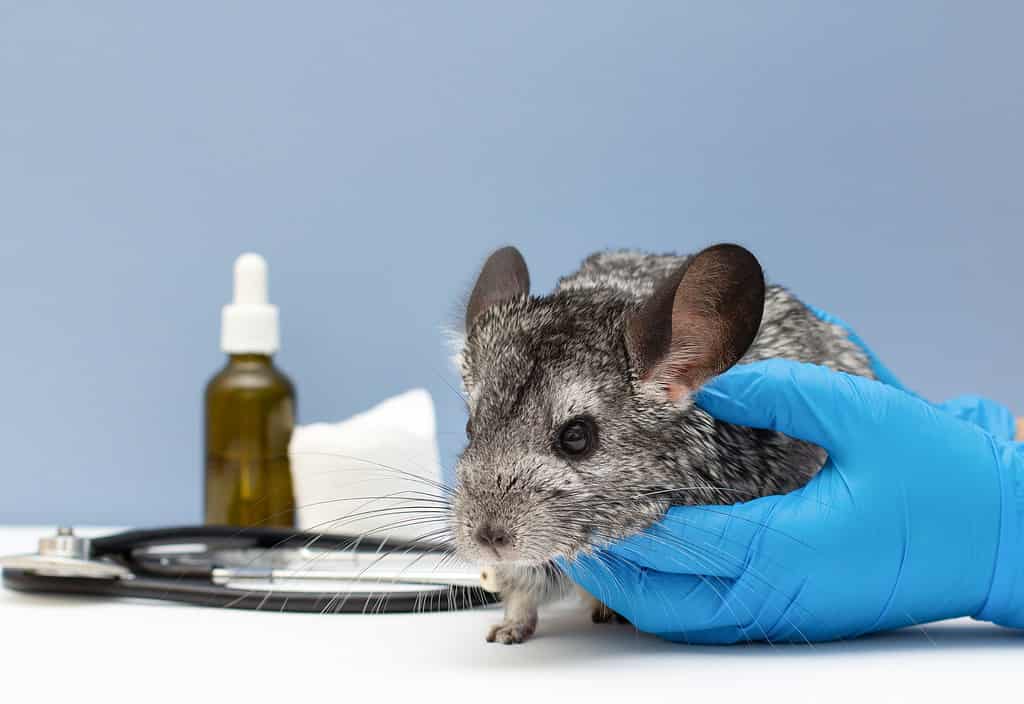
Proper chinchilla husbandry means taking them to the vet regularly to have a checkup.
©Irina Vasilevskaia/iStock via Getty Images
Chinchillas can have many health problems, just the same as any other living being. Some of their issues are due to their extremely dense fur. If their fur becomes wet, it can lead to fungal infections on their skin. They can also get ringworm, which is challenging to get rid of. The fur of the males can end up wrapped around the penis sheath, causing pain and other issues. They also sometimes chew on their fur or suffer from hair loss.
We’ve already covered heat stroke and the severity of the issue. Females can also have a problem when their uterus fills with pus and has to be immediately removed. Due to numerous causes, the chinchilla’s gastrointestinal system can stop working, and harmful bacteria will grow, causing the chinchilla to get pain and abdominal upset. When this happens, it can be complicated to restart it. Generally, it involves a hospital stay, lots of IV fluids, and other medications.
Chinchillas and other rodents are prone to developing respiratory sickness. As soon as the signs of the illness become present, the chinchilla is at risk of quickly developing pneumonia. Pneumonia is difficult to treat in smaller animals, and the prognosis isn’t very good.
15. They Need a Lot of Exercise
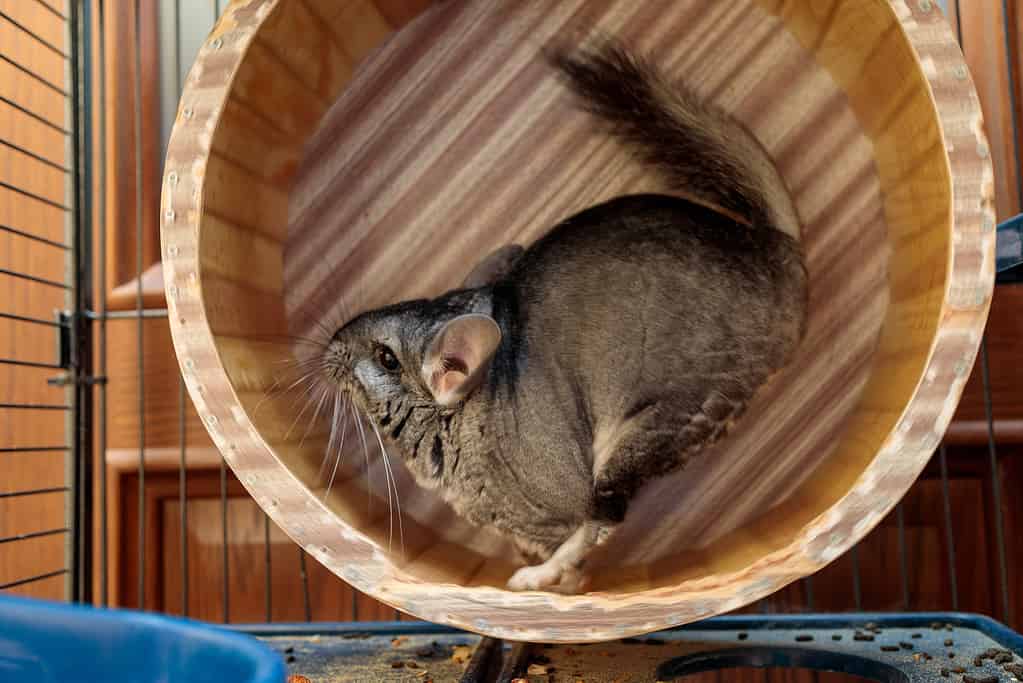
Chinchillas require a lot of exercise and stimulation to keep them active and happy.
©Andrei Marchenko/iStock via Getty Images
A chinchilla may become depressed if it does not get the opportunity to run and play. They love playing with other chinchillas and will learn that you are safe and come bounding towards you and hop off your knee to continue the fun time. They require mental stimulation. These were once wild animals that could run and hop in abundance in the cool night temperatures with their friends.
If your schedule is tight and time for playing with your chinchilla is challenging, they are not the pet for you. They cannot live in a cage and remain left alone for their lives. They will be miserable. An animal is better left to a home that can provide all of its requirements than move in with you and hope you can make time for it. That isn’t fair to anyone. Make sure to do plenty of research whenever you are thinking about adopting a chinchilla or any animal. You don’t want a situation where a creature goes without choice and must live in miserable circumstances for 20 years. Make sure to choose a pet that you will be able to care for 100%.
Thank you for reading! Have some feedback for us? Contact the AZ Animals editorial team.








